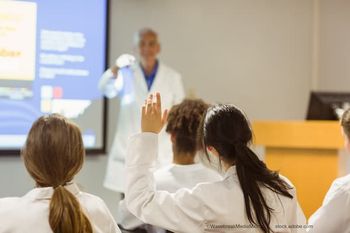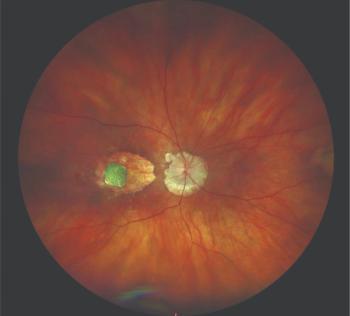
ASCRS 2023: Artificial intelligence application to ophthalmology
Alvin Liu, MD, sat down with Sheryl Stevenson, Group Editorial Director, Ophthalmology Times®, to discuss his presentation on deep learning and 3D OCT at the ASCRS annual meeting in San Diego.
Alvin Liu, MD, sat down with Sheryl Stevenson, Group Editorial Director, Ophthalmology Times®, to discuss his presentation on deep learning and 3D OCT at the ASCRS annual meeting in San Diego.
Video transcript
Editor’s note: This transcript has been edited for clarity.
Sheryl Stevenson:
We're joined with Dr. Alvin Liu, who's going to be presenting at this year's ASCRS. Welcome to you. Tell us a little bit more about your presentation regarding deep learning and 3D OCT.
Alvin Liu, MD:
Sheryl, thank you so much for having me speak today. I'm happy to share results. So let me introduce myself a little bit more. My name is Alvin Liu. I'm a retina specialist at the Wilmer Eye Institute at Johns Hopkins University.
My research focuses on the artificial intelligence application to ophthalmology. And specifically, I'm also the director of the Wilmer Precision Ophthalmology Center of Excellence. So the work that I will be presenting at the ASCRS this year, is directly related to our center of excellence.
The overall premise is that we know macular degeneration is a leading cause of central vision loss in the elderly in the US and around the world. Specifically, most patients with AMD lose vision because of the wet form of AMD. Specifically for wet AMD we know that earlier, timely treatment with better presenting visual acuity predicts better final visual acuity. So it is imperative for us to figure out which patients are at a high risk of imminent conversion to wet AMD.
Currently there are ways for us to provide an average estimate of conversion or progression to advanced AMD using ERAS criteria. However, the ERAS criteria can only provide an average risk estimate for over five years. The model we have developed can be used as a tool that can provide information in a more reasonable or more meaningful timeframe, which is six months. We start out by asking ourselves, can we use deep learning, which is the cutting edge artificial intelligence technique for medical image analysis. Can we use deep learning to analyze OCT images to predict imminent conversion from dry to wet AMD within six months.
To do that, we collected a dataset of over 2500 patients with AMD and over 30,000 OCT images. We train a model that is able to produce robust prediction for when an eye is at a high risk of converting to wet AMD within six months using an OCT image alone. In addition, we ran different experiments, trying to see what if we also feed this model additional information in the form of how many obtainable clinical variables, such as the patient's age, sex, visual acuity, or fellow eye status, and we were able to demonstrate that in the prediction of imminent conversion to wet AMD. In the first eye of patients, meaning these are patients who had never converted to wet AMD in either eye, this additional tabular clinical information was also helpful.
Newsletter
Don’t miss out—get Ophthalmology Times updates on the latest clinical advancements and expert interviews, straight to your inbox.





